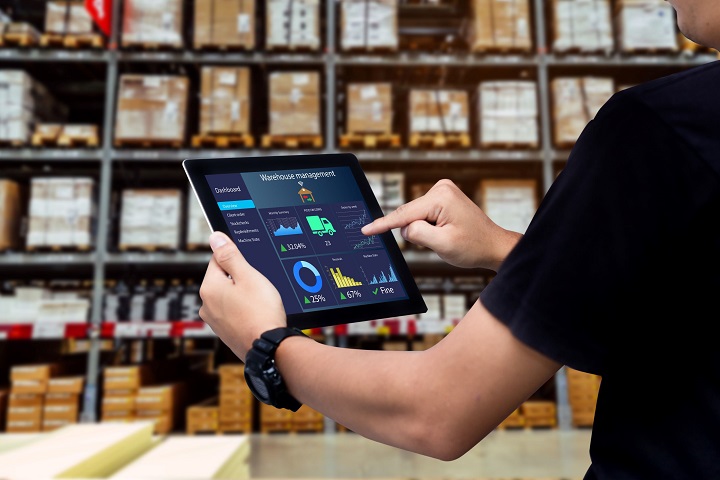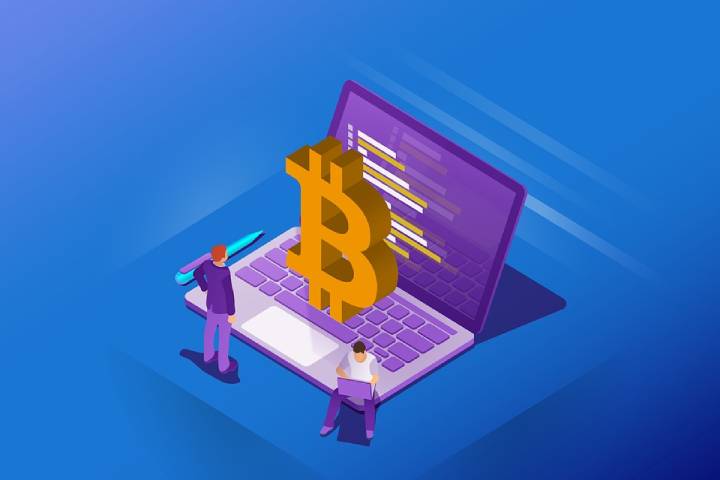Software
Who Provides The Best WMS Software Training?
Workers must be provided with the best WMS software training to maximize business benefits. Learn who can organize these lectures most effectively.

No matter how great your software may be, it requires users familiar with how it works and what it does. Thus, every automated business tool addition must be accompanied by proper training; warehouse management system (WMS) software isn’t an exception.
WMS software is a comprehensive digital solution for manufacturing, retailing, distribution, and fulfillment businesses. These automated tools can track goods in all supply chain stages and provide companies with insights into their operations.
The best WMS software enables companies to streamline and scale their operations without necessarily increasing operational costs. But to do so, companies must organize high-quality training for their employees to optimize their features and benefits.
If you’re wondering who is best qualified to do it, read on to take a closer look at the basics of WMS software training.
Table of Contents
1. Who provides the WMS software training?
The WMS software vendor is the most qualified entity to provide training to its clients. Sometimes, these sessions can be held for free if they’re included in the purchase costs. Third-party consultants can be hired when the client wants in-depth WMS software training.
Software companies and consultants adhere to different training designs, but most will conduct on-site and off-site lectures and presentations about the system and how it works. Depending on the number of users and specific arrangements with the clients, the vendor can conduct ‘super user training,’ where they round up the sector heads with broader software access to later train their team.
Sometimes, online seminars are accessible through the vendor’s site, which can be helpful, especially for larger firms with multiple warehouses.
2. Who must participate in the WMS software training?
The warehouse management system software is often used by staff assigned to specific duties in the storage area. Department managers or supervisors are often the first batch of trainees and are expected to train others, for instance, workers in inbound, outbound, and picking areas.
It’s wise to conduct periodic and comprehensive WMS software training for all personnel, considering the turnover rates in the sector. This helps employees maximize their operations regardless of their roles and assignments, which is WMS software’s primary goal. Inclusive training can help increase employees’ motivation and contributes to their efficiency. Knowing that they have a chance to move up the ladder helps increase employee retention.
Additionally, training must include executives who don’t necessarily use the tool daily but must understand its functionalities and specific operations, like pulling up reports and data analysis.
Training must be hands-on and relevant regardless of the target participants and the advanced training technologies. It should discuss essential topics that resonate with staff who want to increase productivity and efficiency.

3. What’s the best approach for WMS software training?
Learning preferences differ from one person to another. But the ‘super user training’ can be a common approach, as these mid-level employees have more access than other warehouse personnel. Ideally, they also have more experience and can relate more easily to the subjects at hand, except when their computer literacy level is low.
In large warehouses, conducting multiple sessions may be a good idea so long as these users pass on their knowledge to others using existing WMS tools. Ideally, the sessions must be done on-site to facilitate hands-on training, which undoubtedly is more effective than off-site discussions. At the end of the training, organizers must measure training effectiveness by seeking feedback from participants.
Off-site lectures may be reserved when the clients’ staff has enough WMS software experience. They can interact more effectively about the gaps, share best practices, and provide valuable insights to help improve or upgrade the tool.
4. When should the WMS software training be?
The WMS software training must be done when the system is up and running, and the features and functionalities are in place. Moreover, companies must address common challenges that can hamper training success.
Before the training, explain why the business needs the software and how they can use it to their advantage. Doing so can hopefully reduce resistance and negative impressions about the proposed operational changes.
And for how long?
Training length depends on the company’s requirements and how engaged and interactive the audience will be. The sessions can be broken into multiple sessions for inclusive presentations where the firm prefers fewer participants.
However, the greatest factors influencing training length are the available software features and the warehouse’s operation. Basic ones can be done in at least one day, whereas more complex systems require a few days or weeks to finish. However, some companies might ask for at least two sessions to keep their operations going during lectures.
Once warehouse staff is capable enough to operate the tool, they can create a video or webinar internally and use the cloud storage platform to allow newly hired personnel to access them.
Wrapping up
Comprehensive training is necessary for any warehouse management system (WMS) software implementation. And successful training has two elements: software and user preparation. The warehouse company, vendor, or consultant must cover all operational aspects, while users must understand the lecture’s why, what, who, and how, to generate favorable results.
Computer Network
MVPD vs. vMVPD: Decoding the Distinctions in Video Content Distribution
They both offer television programming distribution services, but there are multiple distinctions between them. Let’s begin by defining both and then looking at MVPD vs vMVPD regarding their advantages.

MVPD stands for “Multichannel Video Programming Distributor,” while vMVPD stands for “Virtual Multichannel Video Programming Distributor.” They both offer television programming distribution services, but there are multiple distinctions between them. Let’s begin by defining both and then looking at MVPD vs vMVPD regarding their advantages.
Table of Contents
1. MVPD
MVPD is a traditional cable or satellite television provider that delivers television programming to subscribers. These providers typically offer channels and services provided through physical infrastructure, such as coaxial cables or satellite dishes. MVPDs have established networks that transmit television signals to subscribers’ homes.
2. vMVPD
vMVPD, also known as an OTT (Over-the-Top) service or streaming TV service, is a service that delivers live and on-demand television programming over the Internet. vMVPDs utilize internet-based streaming technology to transmit TV channels and content to subscribers, eliminating the need for traditional cable or satellite infrastructure.
3. Advantages of MVPD
MVPD has several advantages that make it a preferred choice for many individuals. Here are some of the benefits of MVPD:
Extensive Channel Selection
MVPDs typically offer a wide range of channels, including local broadcast networks, cable channels, premium channels, sports networks, and specialty channels. They often provide comprehensive channel lineups with various packages and tiers. This allows subscribers to access diverse content, catering to different interests and preferences.
Established Infrastructure
MVPDs have well-established cable or satellite infrastructure, ensuring reliable signal transmission and wide coverage areas. They have built networks that deliver television programming to subscribers’ homes with high-quality audio and video.
Premium Features and Services
MVPDs often offer additional services and features to enhance the viewing experience. This can include access to video-on-demand libraries, pay-per-view events, sports packages, and digital video recording (DVR) functionality. These features allow subscribers to watch their chosen content on their schedule and access exclusive content.
Live Sports and Events
MVPDs often provide comprehensive sports coverage, including access to regional and national sports networks. They may offer packages dedicated to sports programming, allowing fans to watch live games, matches, and special events. This is particularly advantageous for sports enthusiasts who want access to a wide range of sports content.
Local Channel Availability
MVPDs generally ensure access to local broadcast networks, allowing subscribers to watch local news, weather updates, and other local programming. This benefits individuals who want to stay informed about regional events and local content.

Bundling Options
MVPDs may offer bundle options, allowing subscribers to combine television services with other services such as internet access and home phone services. This can provide convenience and potential cost savings through bundling multiple services from a single provider.
Reliability
MVPDs typically have dedicated infrastructure and robust systems, ensuring the reliable transmission of television signals. They have a history of delivering consistent service quality to subscribers.
4. Advantages of vMVPD
vMVPD offers several advantages contributing to its popularity and appeal. Here are some benefits of vMVPD:
Flexibility in Channel Selection
vMVPDs often provide more flexibility than traditional MVPDs regarding channel selection. Subscribers can typically choose from various channel packages or customize their channel lineup to some extent. This allows individuals to personalize their viewing experience and access the channels they prefer without paying for ones they don’t need.
Cost-Effectiveness
vMVPDs generally offer more affordable options compared to traditional MVPDs. They often have lower starting prices, and no equipment rental fees are typically involved. This can save costs, especially for individuals looking to reduce their monthly entertainment expenses.
Accessibility and Convenience
vMVPDs can be accessed on various connected devices. Subscribers can watch their favorite content on streaming media players, smart TVs, computers, tablets, or mobile devices. This allows for greater flexibility and convenience, enabling users to enjoy their favorite shows and movies on the go or in different rooms of their homes.
On-Demand Content and Libraries
Many vMVPDs offer on-demand content libraries, allowing subscribers to access a vast selection of movies, TV shows, and other video content whenever they want. This allows watching content at their convenience rather than being restricted to scheduled programming.
No Contracts and Flexibility
vMVPDs often offer month-to-month subscriptions without long-term contracts. This allows subscribers to cancel or change their subscription plans as needed without incurring significant penalties. It will enable users to try different services and adapt their viewing preferences based on their evolving needs.
Broad Availability
vMVPDs are not limited by physical infrastructure and can be accessed in broader regions as long as reliable internet connectivity is available. This makes them accessible to a larger population, including those who may not have access to traditional cable or satellite TV providers in their area.
It’s important to note that the advantages of vMVPDs & MVPDs may vary depending on the specific provider and their packages. Researching and comparing offerings from different vMVPD & MVPD providers is recommended to find the one that best aligns with your preferences, budget, and viewing habits.
-

 Instagram2 years ago
Instagram2 years agoBuy IG likes and buy organic Instagram followers: where to buy them and how?
-

 Instagram2 years ago
Instagram2 years ago100% Genuine Instagram Followers & Likes with Guaranteed Tool
-

 Business4 years ago
Business4 years ago7 Must Have Digital Marketing Tools For Your Small Businesses
-

 Instagram3 years ago
Instagram3 years agoInstagram Followers And Likes – Online Social Media Platform

















